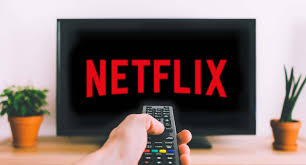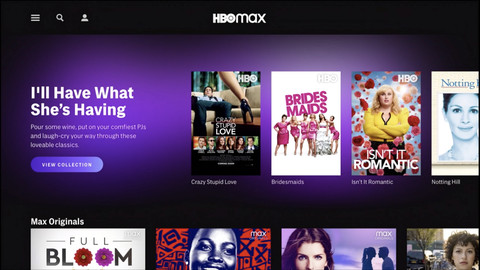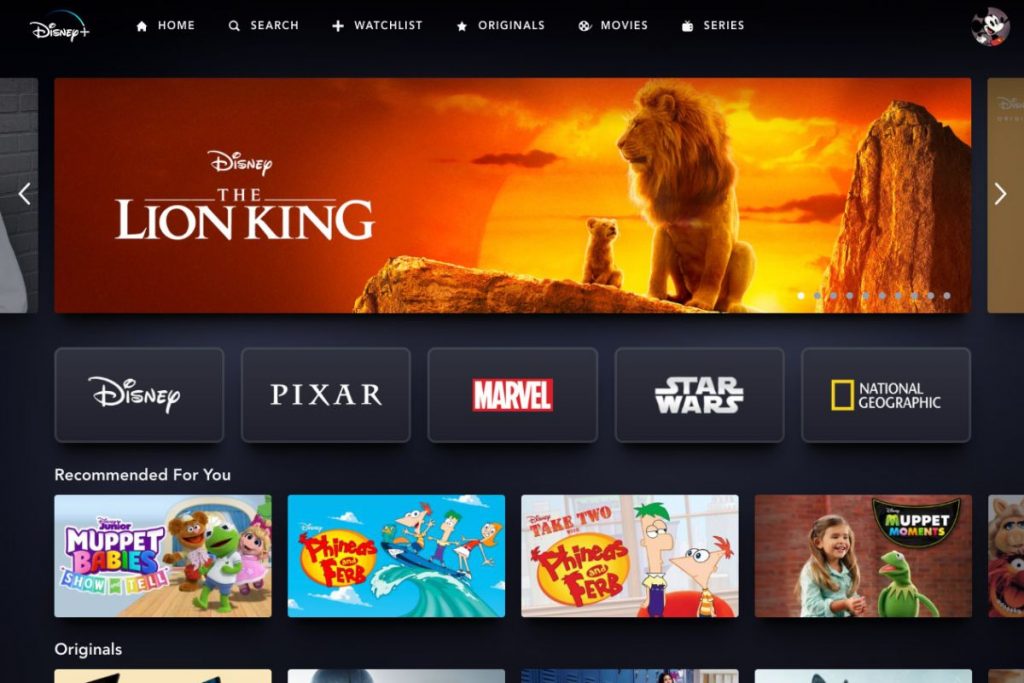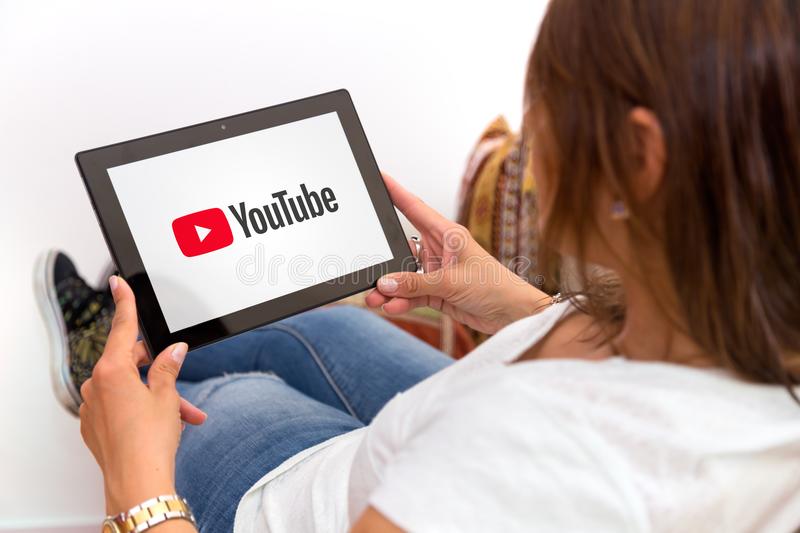Branding Could Be the Deciding Factor in the Streaming Wars
BY: JOSE QUIROZ & ZACK MISKEL | OCT 20, 2021 – 6 MIN READ

Branding Could Be the Deciding Factor in the Streaming Wars
BY: JOSE QUIROZ & ZACK MISKEL | OCT 20, 2021 – 6 MIN READ

Key Takeaways (6-minute read)
- Between streaming services, social media, and user-generated content, the online battle for consumers’ attention rages strong.
- Having good content will not guarantee success without a strong brand promise.
- Netflix could be dethroned for the most subscribers sooner than we think—all because of brand loyalty.
There seems to be a trend in the digital world, particularly in media and entertainment, wherein the more advanced and accessible content becomes, the less it’s valued. Mass media, in a news sense, has certainly seen a downtick in value in the eyes of many as platforms such as blogging, social networking, and streaming services have made it possible for almost anyone to become a “news source” or a superstar. Taking them at their word and placing value on the information or entertainment they provide is solely up to the consumer.
 So how does one with a legitimate business goal apply value to an online media outlet or streaming platform? Branding, for a start. Eye-catching or thought-provoking design, a strong digital presence, good user experience and accessibility, and, above all, a well planned brand strategy will give credibility to a media platform online or off. Whether it’s an established content studio or a TikTok channel, digital media needs branding, particularly today when an online first impression is often the only chance one gets at converting a first-time viewer into a regular customer.
So how does one with a legitimate business goal apply value to an online media outlet or streaming platform? Branding, for a start. Eye-catching or thought-provoking design, a strong digital presence, good user experience and accessibility, and, above all, a well planned brand strategy will give credibility to a media platform online or off. Whether it’s an established content studio or a TikTok channel, digital media needs branding, particularly today when an online first impression is often the only chance one gets at converting a first-time viewer into a regular customer.
Looking at the video streaming sector of online media as an example, we see the full gamut of platforms: Fortune 500 companies and decades-old production studios must compete directly with startups and individual content creators with millions of subscribers. No longer does good content—or even great content—automatically set one up with the best chance of success. For C-suite executives and creative marketers, it’s a head-spinning game of algorithms, SEO, and the infernal hashtag. Where to start?
Again, it all comes back to the solid foundation of your business—your branding. Consumers are people, and people want to feel connected to the media they watch, listen to, and read. They want to know that the creators of that content are trustworthy and have the same values they do. Good, intentional branding strategy can build that relationship. This is what will separate a production company with a clear vision and strategy for the future from the YouTube star hopping on the latest viral trends. Branding builds value that will convert that quality content into a successful consumer experience and build customer loyalty when implemented strategically and with purpose.
Let’s look at how branding can build success for companies in the streaming service game:
The Best Streaming Service Brands
 When they started a mail-order DVD rental service in 2007, it’s doubtful any of the executives at Netflix knew the business would someday be the king of online video content. With over 200 million subscribers (the first streaming service to hit that milestone), the company has set the benchmark goal for competitors and content creators alike. Netflix’s branding and unique business model paved the way for its success in brokering deals with media partners, studios, and talent to create original content. The simple yet impressive-looking red logo harks back to movie theaters, immediately giving consumers a sense of wonder and the feeling that they are about to have an experience anytime they log in. Netflix’s creative branding carries through its user interface, its social media, and its advertising across digital and print. Seeing that now-iconic red N on a post about a new series communicates a brand promise to viewers that no other streaming service has quite achieved.
When they started a mail-order DVD rental service in 2007, it’s doubtful any of the executives at Netflix knew the business would someday be the king of online video content. With over 200 million subscribers (the first streaming service to hit that milestone), the company has set the benchmark goal for competitors and content creators alike. Netflix’s branding and unique business model paved the way for its success in brokering deals with media partners, studios, and talent to create original content. The simple yet impressive-looking red logo harks back to movie theaters, immediately giving consumers a sense of wonder and the feeling that they are about to have an experience anytime they log in. Netflix’s creative branding carries through its user interface, its social media, and its advertising across digital and print. Seeing that now-iconic red N on a post about a new series communicates a brand promise to viewers that no other streaming service has quite achieved.
 For decades, the HBO brand has been synonymous with luxury. Its premium content was for years much-desired for television consumers, made even more so by the fact it cost extra. HBO Max is no exception, carrying that sexy intrigue with it when WarnerMedia launched the streaming platform in late May 2020. It’s already climbed to 67.5 million subscribers—but, like Amazon Prime Video’s 175 million users, that number includes the HBO subscriber base that existed before the streaming service launched. HBO Max does have a sleek user interface and high-quality content, but we think its best branding move could be its strategy of releasing new blockbuster films exclusively via streaming. Films like the upcoming Batman reboot will no doubt draw new subscribers to the service, and although this new direct-to-streaming model with movies having limited windows in theaters has garnered some controversy, it’s likely not going away anytime soon. A good brand partnership pays off.
For decades, the HBO brand has been synonymous with luxury. Its premium content was for years much-desired for television consumers, made even more so by the fact it cost extra. HBO Max is no exception, carrying that sexy intrigue with it when WarnerMedia launched the streaming platform in late May 2020. It’s already climbed to 67.5 million subscribers—but, like Amazon Prime Video’s 175 million users, that number includes the HBO subscriber base that existed before the streaming service launched. HBO Max does have a sleek user interface and high-quality content, but we think its best branding move could be its strategy of releasing new blockbuster films exclusively via streaming. Films like the upcoming Batman reboot will no doubt draw new subscribers to the service, and although this new direct-to-streaming model with movies having limited windows in theaters has garnered some controversy, it’s likely not going away anytime soon. A good brand partnership pays off.
 With the way its number of subscribers has climbed since its launch in November of 2019, it would seem Disney+ might, perhaps predictably, overtake Netflix as the most-subscribed streaming service within the next couple of years. However, the service itself has some kinks to work out with user experience and design. The search function is clunky and for users watching on their web browsers, finishing a movie essentially leaves one stuck on the page with no options for escape except going back to the home screen. But despite all that, Disney+ has racked up 116 million subscribers with no preexisting database like those of HBO Max and Amazon Prime Video to pad the vault. We can only surmise that it all comes down to brand loyalty.
With the way its number of subscribers has climbed since its launch in November of 2019, it would seem Disney+ might, perhaps predictably, overtake Netflix as the most-subscribed streaming service within the next couple of years. However, the service itself has some kinks to work out with user experience and design. The search function is clunky and for users watching on their web browsers, finishing a movie essentially leaves one stuck on the page with no options for escape except going back to the home screen. But despite all that, Disney+ has racked up 116 million subscribers with no preexisting database like those of HBO Max and Amazon Prime Video to pad the vault. We can only surmise that it all comes down to brand loyalty.
 You might be wondering, “What about YouTube?” Yes, the OG internet video platform is still topping the charts when it comes to users, at over 1 billion, but paying subscribers amount to a measly 33 million combined between YouTube Premium and YouTube TV services. If YouTube wants to seriously join the streaming war, it’s going to have to work harder for it—and a rebrand of its paid services would be a great place to begin.
You might be wondering, “What about YouTube?” Yes, the OG internet video platform is still topping the charts when it comes to users, at over 1 billion, but paying subscribers amount to a measly 33 million combined between YouTube Premium and YouTube TV services. If YouTube wants to seriously join the streaming war, it’s going to have to work harder for it—and a rebrand of its paid services would be a great place to begin.
Online or off, branding is and has always been the key to success for businesses with strong products, services, or content. Today’s digital landscape brings new challenges to brand strategy, but a strong creative team ready to innovate can take a concept or content to the next level through tried-and-true branding and consumer engagement. Antonio & Paris is that team, and we’re here when you’re ready to press play.
About A&P
A&P, a brand agency, excels in finding innovative ways for clients to provide exceptional experiences to their customers. Their work includes consumer insight, brand innovation, creative development, mobile and technology solutions for global brands such as AT&T, Mini USA, DIRECTV, Newell Rubbermaid, Tenet Healthcare, and Barco Escape. For more information about A&P, visit them on Facebook, Twitter or antonioandparis.com.
Key Takeaways (6-minute read)
- Between streaming services, social media, and user-generated content, the online battle for consumers’ attention rages strong.
- Having good content will not guarantee success without a strong brand promise.
- Netflix could be dethroned for the most subscribers sooner than we think—all because of brand loyalty.
There seems to be a trend in the digital world, particularly in media and entertainment, wherein the more advanced and accessible content becomes, the less it’s valued. Mass media, in a news sense, has certainly seen a downtick in value in the eyes of many as platforms such as blogging, social networking, and streaming services have made it possible for almost anyone to become a “news source” or a superstar. Taking them at their word and placing value on the information or entertainment they provide is solely up to the consumer.
So how does one with a legitimate business goal apply value to an online media outlet or streaming platform? Branding, for a start. Eye-catching or thought-provoking design, a strong digital presence, good user experience and accessibility, and, above all, a well planned brand strategy will give credibility to a media platform online or off. Whether it’s an established content studio or a TikTok channel, digital media needs branding, particularly today when an online first impression is often the only chance one gets at converting a first-time viewer into a regular customer.
Looking at the video streaming sector of online media as an example, we see the full gamut of platforms: Fortune 500 companies and decades-old production studios must compete directly with startups and individual content creators with millions of subscribers. No longer does good content—or even great content—automatically set one up with the best chance of success. For C-suite executives and creative marketers, it’s a head-spinning game of algorithms, SEO, and the infernal hashtag. Where to start?
Again, it all comes back to the solid foundation of your business—your branding. Consumers are people, and people want to feel connected to the media they watch, listen to, and read. They want to know that the creators of that content are trustworthy and have the same values they do. Good, intentional branding strategy can build that relationship. This is what will separate a production company with a clear vision and strategy for the future from the YouTube star hopping on the latest viral trends. Branding builds value that will convert that quality content into a successful consumer experience and build customer loyalty when implemented strategically and with purpose.
Let’s look at how branding can build success for companies in the streaming service game:
The Best Streaming Service Brands
When they started a mail-order DVD rental service in 2007, it’s doubtful any of the executives at Netflix knew the business would someday be the king of online video content. With over 200 million subscribers (the first streaming service to hit that milestone), the company has set the benchmark goal for competitors and content creators alike. Netflix’s branding and unique business model paved the way for its success in brokering deals with media partners, studios, and talent to create original content. The simple yet impressive-looking red logo harks back to movie theaters, immediately giving consumers a sense of wonder and the feeling that they are about to have an experience anytime they log in. Netflix’s creative branding carries through its user interface, its social media, and its advertising across digital and print. Seeing that now-iconic red N on a post about a new series communicates a brand promise to viewers that no other streaming service has quite achieved.
For decades, the HBO brand has been synonymous with luxury. Its premium content was for years much-desired for television consumers, made even more so by the fact it cost extra. HBO Max is no exception, carrying that sexy intrigue with it when WarnerMedia launched the streaming platform in late May 2020. It’s already climbed to 67.5 million subscribers—but, like Amazon Prime Video’s 175 million users, that number includes the HBO subscriber base that existed before the streaming service launched. HBO Max does have a sleek user interface and high-quality content, but we think its best branding move could be its strategy of releasing new blockbuster films exclusively via streaming. Films like the upcoming Batman reboot will no doubt draw new subscribers to the service, and although this new direct-to-streaming model with movies having limited windows in theaters has garnered some controversy, it’s likely not going away anytime soon. A good brand partnership pays off.
With the way its number of subscribers has climbed since its launch in November of 2019, it would seem Disney+ might, perhaps predictably, overtake Netflix as the most-subscribed streaming service within the next couple of years. However, the service itself has some kinks to work out with user experience and design. The search function is clunky and for users watching on their web browsers, finishing a movie essentially leaves one stuck on the page with no options for escape except going back to the home screen. But despite all that, Disney+ has racked up 116 million subscribers with no preexisting database like those of HBO Max and Amazon Prime Video to pad the vault. We can only surmise that it all comes down to brand loyalty.
You might be wondering, “What about YouTube?” Yes, the OG internet video platform is still topping the charts when it comes to users, at over 1 billion, but paying subscribers amount to a measly 33 million combined between YouTube Premium and YouTube TV services. If YouTube wants to seriously join the streaming war, it’s going to have to work harder for it—and a rebrand of its paid services would be a great place to begin.
Online or off, branding is and has always been the key to success for businesses with strong products, services, or content. Today’s digital landscape brings new challenges to brand strategy, but a strong creative team ready to innovate can take a concept or content to the next level through tried-and-true branding and consumer engagement. Antonio & Paris is that team, and we’re here when you’re ready to press play.
About A&P
A&P, a brand agency, excels in finding innovative ways for clients to provide exceptional experiences to their customers. Their work includes consumer insight, brand innovation, creative development, mobile and technology solutions for global brands such as AT&T, Mini USA, DIRECTV, Newell Rubbermaid, Tenet Healthcare, and Barco Escape. For more information about A&P, visit them on Facebook, Twitter or antonioandparis.com.

WRITTEN BY
Zack Miskel
Short Bio — Zack joined the Antonio & Paris team at the beginning of 2019 after spending the previous five years running two start-up companies in the Bay Area Now a strategist, Zack works alongside the strategic planning team at Antonio & Paris to deliver a big-picture perspective for clients such as MINI USA, Barco (Belgium), and Brookdale Senior Living, to name a few.

WRITTEN BY
Zack Miskel
Short Bio — Zack joined the Antonio & Paris team at the beginning of 2019 after spending the previous five years running two start-up companies in the Bay Area Now a strategist, Zack works alongside the strategic planning team at Antonio & Paris to deliver a big-picture perspective for clients such as MINI USA, Barco (Belgium), and Brookdale Senior Living, to name a few.

